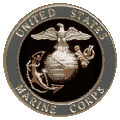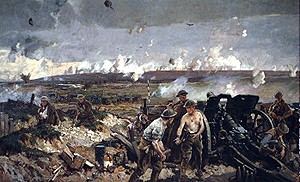INTRODUCTION:
Artillery, general military term for large weapons such as cannons and rocket launchers. Artillery also describes the section or branch of an army that employs these weapons.
The large weapons known as artillery are used by ground forces or mounted on aircraft and ships. They include four main types of weapons: large guns,mortars,howitzers, and rocket launchers. Large guns, mortars, and howitzers are types of cannons.
GUNS:
A gun is a cannon that fires projectiles from a long tube (known as the barrel) at high velocity in a low, flat trajectory. The projectile usually carries a charge that explodes when it hits its target. The barrel of a gun may have spiraled grooves in its bore; the process of adding these grooves is called rifling. Rifling improves the stability of a projectile in flight, making its trajectory more accurate. Some guns use ammunition that can pierce armor. Guns are widely used on warships, armored combat vehicles, and tanks.
The first artillery guns fired simple projectiles that did not explode. Later guns fired ammunition that released shards of metal, called shrapnel, in the air. These early guns were loaded from the front (known as the muzzle) of the barrel. Modern guns are loaded from the side, which increases the speed and ease by which they may be fired.
MORTARS:
A mortar is a cannon that fires projectiles, called shells, in a high, arcing trajectory. This trajectory allows the shells to travel over obstacles to hit a target. Shells are loaded through the muzzle into a short barrel. They carry a charge that propels them from the barrel of the mortar. Mortars are particularly suited to warfare in difficult terrain. They are easily transported and simple to operate.
Like guns, the first mortars fired shells that did not explode. Later mortars fired shells filled with gunpowder. These shells had fuses and could be set to explode on impact, or just before they hit the ground. Mortar shells may also release shrapnel.
HOWITZERS:
Formerly, howitzers were designed with a medium-length barrel to fire a mid-velocity projectile along a curved trajectory. By firing at a low angle, howitzers could achieve adequate range, like guns; at a high angle, they could launch shells over obstacles, like mortars. Today, differences between guns and howitzers are less distinct. Howitzers are now equipped with longer tubes and fire a variety of shells at ranges formerly covered by field guns. Light howitzers are usually mounted on a wheeled carriage that can be towed by a small truck, airlifted by helicopter, or dropped from an airplane with a parachute.
ROCKET LAUNCHERS:
Rocket launchers guide the takeoff of missiles, which are propelled through the air toward a target. Missiles can travel vast distances and hit targets with great accuracy. Most missiles consist of a rocket, which propels the missile, and an explosive charge called a warhead. There are two main types of missiles: unguided and guided. Unguided missiles, sometimes called rockets, are aimed by a rocket launcher at a specific trajectory. Guided missiles have special equipment that leads them to a target after they have been launched.
Rocket launchers were not widely used until World War II (1939-1945). Among the most powerful weapons used during the war was the German V-2 rocket, which left the earth's atmosphere during its high-arc flight to the target and had a range of 350 km (220 mi). Modern missiles can be fired in rapid succession from multiple rocket launchers. These missiles may be armed with a nuclear warhead.
THE DEVELOPMENT OF ARTILLERY:
The Romans and other peoples of ancient times used devices such as catapults to hurl rocks and other projectiles at enemy fortifications and formations. The first gunpowder weapons appeared in Europe in the early 1300s. Usually in the form of firing rocks, iron balls, or large, arrow-shaped bolts, the artillery of this time was often more successful in creating fear in enemy ranks than in inflicting actual damage. The first artillery pieces were notoriously unreliable and had a tendency to explode upon firing. This remained a problem until the late 1800s. By then, advances in casting gun barrels improved effectiveness and artillery earned a preeminent place in major armies.
The development of artillery produced changes in warfare tactics. The first guns and mortars were used primarily against fortified cities because the artillery's great weight prevented it from being used in mobile warfare. Not until the late 1400s did the French effectively use wheeled cannons in battle. For nearly another three centuries artillery was attached to ground forces. By the early 1800s artillery had come into its own as a mobile supporting force in warfare. Used in batteries of many guns, massed artillery fire was used to destroy attacking enemy formations or disrupt defending forces before launching an attack. Mobile horse-drawn artillery could be shifted from place to place on a battlefield.
During World War I (1914-1918) massed artillery fire denied both sides the ability to maneuver forces, a condition that led to the stalemate of trench warfare. World War II saw a return to maneuver tactics with the advent of tanks and tracked personnel carriers, but artillery continued to be the most destructive force on the battlefield.
In recent conflicts, such as in the Korean War (1950-1953) and the Vietnam War (1959-1975), artillery has provided most of the fire support for ground forces. Cannon artillery delivers close-in supporting fire with antiarmor and antipersonnel munitions. Examples include laser-guided projectiles that can destroy moving tanks, and munitions that dispense antipersonnel or antiarmor bomblets. Beehive projectiles are canisters filled with hundreds of small darts that are employed against massed personnel at close range. United States Army medium howitzers are capable of firing chemical and nuclear munitions along with scatterable mines.
Recent advances in on-board computers and self-locating capabilities enable modern cannons and rocket launchers to move around the battlefield independently, stopping to shoot, and then quickly moving to a new firing position. Some modern artillery cannons and launchers can deliver what are called “smart” munitions. These are projectiles and warheads that can locate and home-in on stationary or moving targets using sophisticated sensors and seekers. These munitions are referred to as “fire-and-forget” because they do not have to be updated in flight




 | ||||||
WWI Battle Of Vimy Ridge France
Canadians over run Germans
BACK TO HOME PAGE
BACK TO CONTENTS PAGE
PAUL MARQUIS
WEB MASTER
TO ARTILLERY HISTORY
PAGE THREE
TO ARTILLERY HISTORY
PAGE TWO

